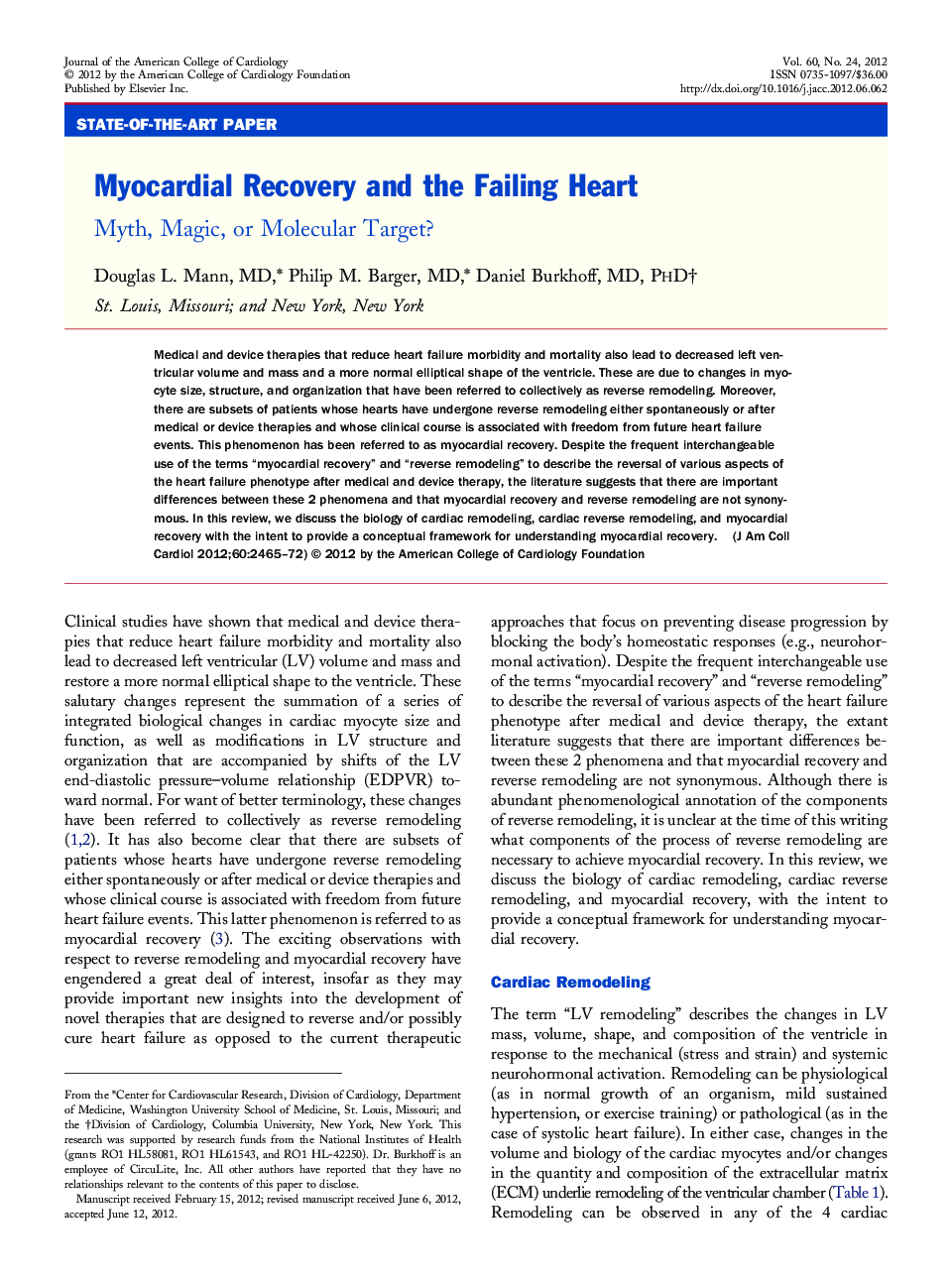| Article ID | Journal | Published Year | Pages | File Type |
|---|---|---|---|---|
| 2946168 | Journal of the American College of Cardiology | 2012 | 8 Pages |
Medical and device therapies that reduce heart failure morbidity and mortality also lead to decreased left ventricular volume and mass and a more normal elliptical shape of the ventricle. These are due to changes in myocyte size, structure, and organization that have been referred to collectively as reverse remodeling. Moreover, there are subsets of patients whose hearts have undergone reverse remodeling either spontaneously or after medical or device therapies and whose clinical course is associated with freedom from future heart failure events. This phenomenon has been referred to as myocardial recovery. Despite the frequent interchangeable use of the terms “myocardial recovery” and “reverse remodeling” to describe the reversal of various aspects of the heart failure phenotype after medical and device therapy, the literature suggests that there are important differences between these 2 phenomena and that myocardial recovery and reverse remodeling are not synonymous. In this review, we discuss the biology of cardiac remodeling, cardiac reverse remodeling, and myocardial recovery with the intent to provide a conceptual framework for understanding myocardial recovery.
